Jesus in the Passover
“What does Jesus have to do with the Passover? Passover is Jewish!”
Well… so is Jesus!
Jesus celebrated the Passover every year during his lifetime. Even more than that, we believe that all of the symbols of Passover ultimately point to him.
Here are just a few examples of how the symbols of Passover find fulfillment in Jesus.
THE PASSOVER LAMB
The Israelites at the time of the Exodus were told to sacrifice an unblemished lamb and roast it without breaking any of its bones. They were to apply the blood to the doorpost of their homes. This blood on the doorpost was to protect them from the angel of death who would pass through Egypt and slay the firstborn son in every house. But anyone who believed God and obeyed him by putting the blood on the door would save their firstborn from death.
During his lifetime, Jesus claimed that he would die on a Roman cross and by his death provide life for his followers. Later, he was executed by the Romans. Three days after his crucifixion, Jesus rose from the dead and visited his disciples on numerous occasions. His death had been a sacrifice to bring eternal life to his followers.
John the Baptizer once referred to Jesus publicly as, “The Lamb of God who takes away the sin of the world!” Just like the Lamb at Passover, Jesus had died to save lives. Like the Passover Lamb, Jesus was unblemished — he led a sinless life. He was slain without breaking any of his bones, just like the Passover Lamb. And just as the Israelites had to apply the blood of the Passover Lamb to the doorpost of their home, so we must apply the blood of the Messiah to the doorpost of our hearts.
That is, it wasn’t enough for the Israelites to simply kill and eat a lamb. They had to apply the blood to the doorpost. In the same way, it isn’t enough that Jesus died. We must apply his death to our lives. He taught that we could do this by believing.
THE AFIKOMEN AND THE MATZA TOSH
On the Passover table, there is a special pouch which contains three layers of matza, or unleavened bread. During the service, the leader removes the middle layer of the matza. He sets one half aside and designates the other half as the “afikomen”, a Greek word which means, “that which comes later”.
He then wraps the afikomen in a white, linen cloth and hides it somewhere in the house. Later, the children search for the afikomen while the adults wait. When the afikomen is found, the leader removes it from the white linen cloth.
What is the meaning of these symbols? The origin of the matza tosh and the afikomen are shrouded in history. The rabbis have some explanations for their meaning, but cannot pinpoint their origin. The rabbis surmise that the matza tosh has three layers to represent the unity of the three patriarchs of Israel, Abraham, Isaac, and Jacob. Some other rabbis say that it represents to unity of the three divisions of the Israelite people, the priests, Levites, and common people.
But why is the middle layer of the matza broken, wrapped, buried, and brought back? How does that fit with the rabbinic explanation? The rabbis’ answer doesn’t seem so convincing.
Jewish believers in Jesus have their own answer. The three layers of the matza tosh could be seen to represent the unity of the three persons of the Trinity: Father, Son, and Holy Spirit. And why is the middle layer of matza broken, wrapped, buried, and brought back? Many believers see Jesus, who was broken for our sin, wrapped in white linen cloths for burial, buried by Joseph of Arimethea, and came back to life on the third day. Why is the middle layer of matza revealed while the other two remain hidden? Again, many believers see Jesus, the middle person of the Trinity who was revealed in a human body while the Father and Holy Spirit remained hidden.
THE LAST SUPPER AND THE PASSOVER
According to the Gospels, the Last Supper was a Passover seder (“seder” is the name of the service held in the home at Passover). During the meal, Jesus broke matza and said, “This is my body which is given for you.” He then took the third cup in the Passover seder, a cup which is known as the cup of redemption and said, “This is the new covenant in my blood.”
The bread already represented to the Jewish people purity and sinlessness, for it was unleavened bread. Leaven, a symbol of sin, is forbidden at Passover. The cup already represented to the Jewish people redemption by the blood, for it represented to blood of the Passover Lamb. Jesus applied and extended these meanings to himself. The bread represents his pure, sinless body and the cup of wine represents his redeeming blood. And so, the communion service so familiar to Christians around the world is really part of the Passover seder!
CONCLUSION
The correlation between Jesus and the Passover may not convince you that he is the Messiah. The ultimate proof that Jesus is who he said he was is the resurrection. To see evidence for the resurrection, check out Why Should Anyone Believe in Jesus? But the fact that the Passover points to Jesus only adds evidence to the case that he is the Messiah, and it helps to confirm the truth for those who already see it. Jesus is our Passover Lamb and he takes away the sin of the world!
